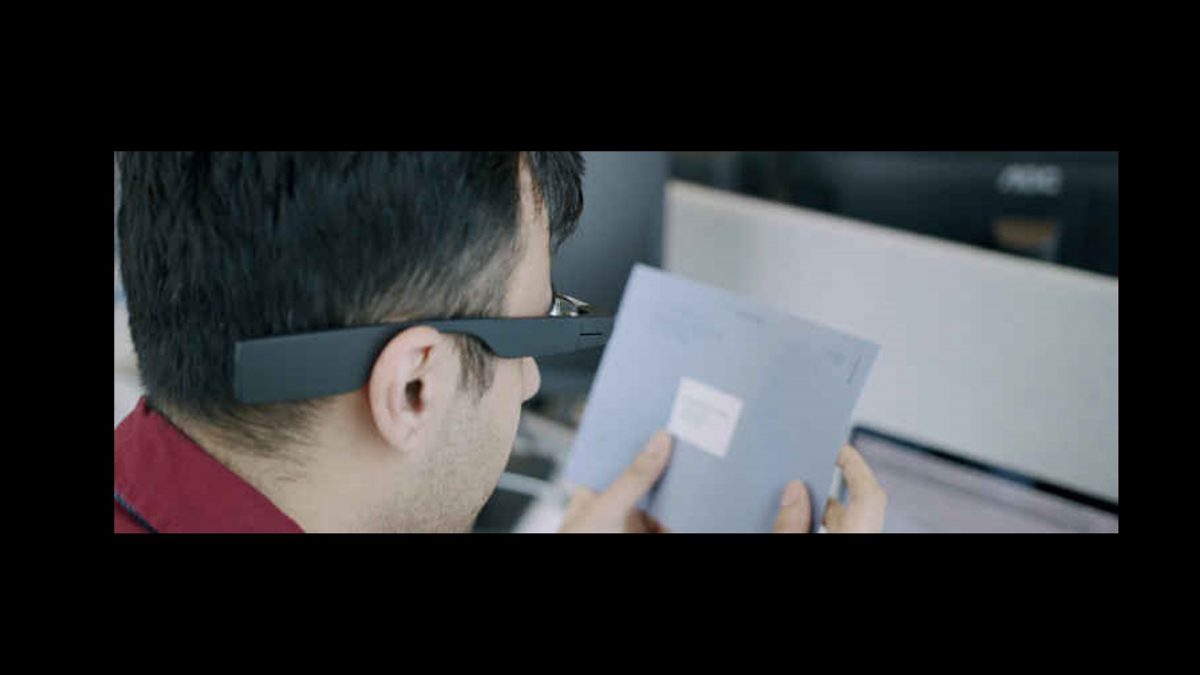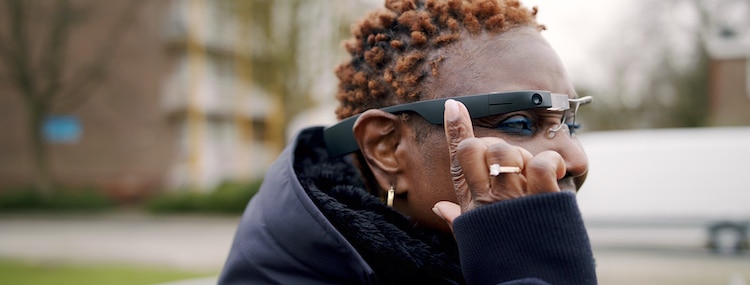Discover Advanced Assistive Tools for Individuals With Visual Problems
The landscape of assistive innovation for people with visual impairments is progressing swiftly, presenting a range of cutting-edge devices that improve freedom and engagement (Braille displays and notetakers). From wise glasses that seamlessly merge visual input with acoustic guidance to advanced navigation applications that redefine spatial understanding, these tools are improving opportunities. The most recent advancements in Braille technology and voice-activated systems considerably contribute to ease of access. Nevertheless, the ramifications of these advancements expand much past plain capability; they test traditional understandings of special needs and self-reliance. What might this indicate for the future of addition and support?
Smart Glasses Innovations
Smart glasses stand for a significant advancement in assistive technology for individuals with visual disabilities. Equipped with electronic cameras and sensing units, clever glasses can catch real-time visual details, which is then refined and communicated to the individual via sound responses or haptic experiences.
Furthermore, developments in expert system have actually additionally boosted the abilities of clever glasses. Artificial intelligence algorithms can recognize faces, reviewed message, and determine items, making them invaluable tools for daily jobs. Customers can get acoustic signs that provide context concerning their atmosphere, fostering independence and confidence.
Additionally, the ergonomic layout and light-weight nature of numerous smart glasses make them ideal for extended use, making certain comfort while boosting functionality. As these tools remain to advance, they hold the prospective to reinvent the means people with visual problems experience their day-to-days live, connecting the gap in between availability and technology. The recurring research study and advancement in this area pledge to expand the opportunities for smart glasses, making them a vital component of modern-day assistive devices.
Navigating Apps and Devices
Many navigation applications and tools have actually arised as necessary resources for people with visual disabilities, significantly boosting their ability to go across unfamiliar atmospheres. These modern technologies take advantage of general practitioner functionality, audio signs, and real-time information to offer individuals with exact navigation aid.
One popular instance is the Aira application, which links customers to trained representatives that can provide visual summaries of environments and navigation support through a real-time video clip feed. This solution improves the customer's spatial recognition and confidence while navigating. An additional notable tool is Seeing Eye GPS, which uses voice-guided navigating and factors of interest, allowing individuals to accessibility essential information regarding their surroundings.

As modern technology proceeds to breakthrough, the growth of extra innovative navigating devices guarantees to further empower people with aesthetic disabilities, helping with seamless mobility and integration into diverse settings. Such technologies are crucial in advertising a much more inclusive culture.
Braille Innovation Developments
Recently, advancements in Braille innovation have actually dramatically transformed how individuals with visual impairments accessibility information and engage with the world around them. The development of portable Braille displays has reinvented analysis by enabling customers to attach wirelessly to smart devices, computers, and tablets. These devices convert message into Braille in real-time, allowing seamless interaction with digital content.
Moreover, innovative Braille printers have arised, boosting the manufacturing of tactile materials. Modern embossers are faster and extra reliable, permitting for the rapid production of Braille papers and academic materials. This efficiency lowers the moment and expense related to producing Braille sources, making them extra easily accessible to companies and schools.
Furthermore, the combination of Braille with other modern technologies, such as man-made intelligence and machine understanding, has opened up brand-new opportunities for personalized understanding experiences. Voice recognition and synthesis technologies can enhance Braille, offering an inclusive approach to information dissemination.
As the need for inclusive education and learning and work environment settings grows, these technical improvements play an important role in equipping individuals with aesthetic impairments, guaranteeing they have equivalent access to details and chances in numerous aspects of life.
Wearable Instruments for Independence
An expanding selection of wearable devices is boosting independence for individuals with aesthetic problems, providing cutting-edge solutions that improve navigation and day-to-day living. Braille displays and notetakers. These tools use sophisticated modern technologies to provide real-time comments and assistance, advertising autonomy in various atmospheres

Wearable innovation also includes smartwatches that can be set with accessibility attributes, making it possible for customers to get notices, track their locations, or perhaps ask for aid with the touch of a button. Some devices include man-made intelligence to evaluate the atmosphere, offering audio descriptions of neighboring items or people.
Voice-Activated Assistive Solutions
Leveraging voice-activated assistive solutions has actually transformed the landscape of assistance for individuals with visual problems, offering hands-free communication Voice-activated assistive devices and accessibility to a variety of jobs. These innovations use all-natural language handling and fabricated intelligence to enable customers to carry out day-to-day activities via easy voice commands.

Moreover, recent advancements in voice recognition accuracy have boosted the user experience considerably, suiting varied accents and speech patterns. This inclusivity ensures that more individuals can gain from these innovations, promoting a better feeling of freedom.
Verdict
To conclude, the development of advanced assistive devices considerably improves the self-reliance and lifestyle for people with visual problems. Advancements such as smart glasses, navigating apps, Braille modern technology, wearable tools, and voice-activated remedies jointly cultivate an even more comprehensive setting. These modern technologies encourage customers to browse their environments with confidence and engage more fully with the globe, inevitably advertising higher availability and equivalent chances for individuals facing aesthetic obstacles.
The landscape of assistive innovation for individuals with visual problems is advancing swiftly, providing a variety of innovative tools that boost autonomy and engagement.Smart glasses stand for a considerable development in assistive technology for people with aesthetic problems. As these tools proceed to develop, they hold the possible to reinvent the method individuals with aesthetic impairments experience their day-to-day lives, connecting the gap in between availability and technology.In current years, developments in Braille technology have actually considerably changed exactly how people with visual impairments accessibility details and engage with the globe around them. These technologies equip individuals to browse their surroundings with self-confidence and engage even more fully with the globe, ultimately advertising higher access and equal possibilities for individuals encountering visual difficulties.